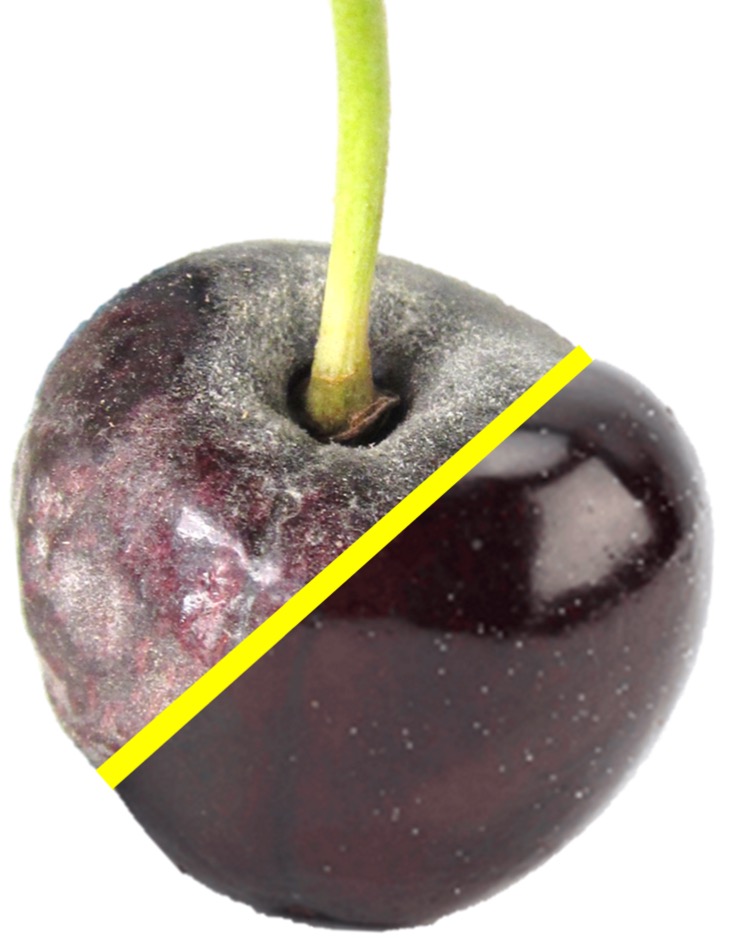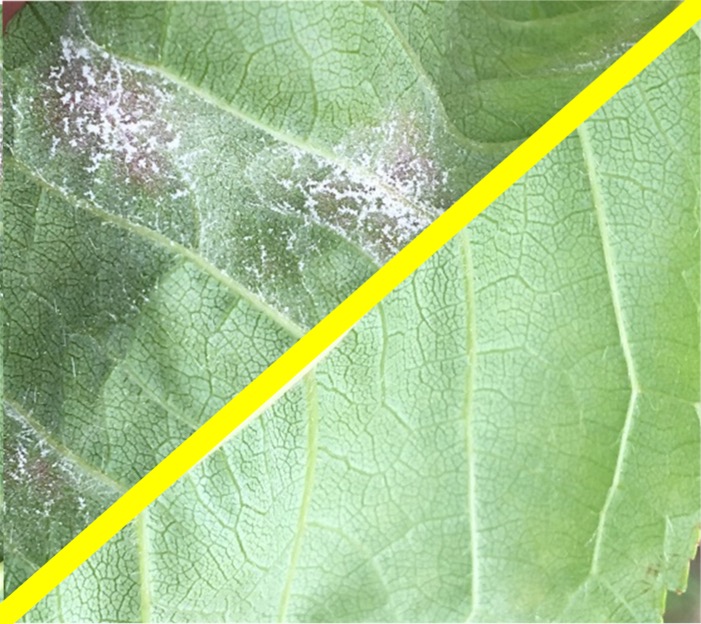Powdery mildew of sweet cherry, caused by Podosphaera clandestina, is a major disease affecting sweet cherry production in low-humidity regions such as the Pacific Northwest. In susceptible cultivars, infected leaves and fruit become covered with a white fungal growth, reducing vegetative growth and rendering the fruit unmarketable. Fungicides are used to control the disease, but this comes at a high financial cost and the risk that the fungus will develop fungicide resistance. Season-long disease control is required initially to manage foliar infection and subsequently to prevent fruit infection. Managing powdery mildew is especially challenging for late-season cultivars, as they may require fungicide protection for as long as three months. Therefore, developing cultivars with reduced susceptibility to powdery mildew (or, dare we hope, resistance) is a high priority for the breeding programs in low-humidity production areas.
Fortunately, there is genetic variation in susceptibility for this disease within sweet cherry germplasm available in the U.S. A genetic study led by the RosBREED sweet cherry team at Washington State University (WSU) verified the presence of a locus named Pmr1, located near the top of sweet cherry chromosome 5, that acts as a Mendelian trait locus for both foliar and fruit response to the powdery mildew infection. The dominant allele at this locus that conferred resistance to both foliar and fruit infection was derived from the resistant cultivar Moreau and the small-fruited Mildew Immune Mazzards which are available from the Prunus collection at the USDA-ARS National Clonal Repository, Davis, CA. Any sweet cherry individual with one or two resistance alleles for Pmr1 exhibited no foliar and fruit infection, even when surrounded by infected individuals with no resistance alleles.
A DNA test for routine screening for alleles at Pmr1 conferring fruit and foliar resistance to powdery mildew has been developed and is currently in use in the sweet cherry breeding program at WSU. Therefore, because knowledge of this genetic region will lead to the more effective breeding of sweet cherry cultivars for fruit and foliar powdery mildew resistance, it is featured as a RosBREED “Jewel in the Genome”.
Susceptible versus resistant sweet cherry fruit and leaf


Category:
